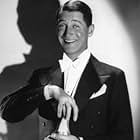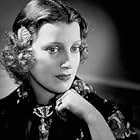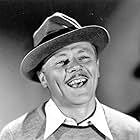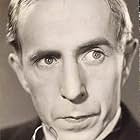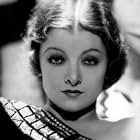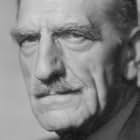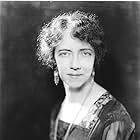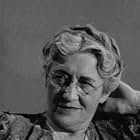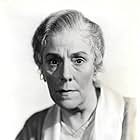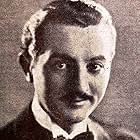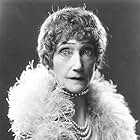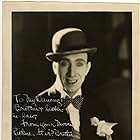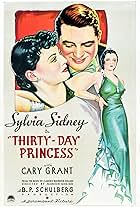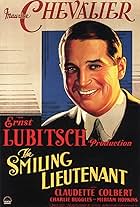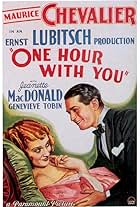IMDb RATING
7.5/10
4.8K
YOUR RATING
A Parisian tailor finds himself posing as a baron in order to collect a sizeable bill from an aristocrat, only to fall in love with an aloof young princess.A Parisian tailor finds himself posing as a baron in order to collect a sizeable bill from an aristocrat, only to fall in love with an aloof young princess.A Parisian tailor finds himself posing as a baron in order to collect a sizeable bill from an aristocrat, only to fall in love with an aloof young princess.
- Awards
- 1 win total
Jeanette MacDonald
- Princess Jeanette
- (as Jeanette Mac Donald)
Charles Ruggles
- Viscount Gilbert de Varèze
- (as Charlie Ruggles)
Blanche Friderici
- Third Aunt
- (as Blanche Frederici)
Joseph Cawthorn
- Dr. Armand de Fontinac
- (as Joseph Cawthorne)
Tyler Brooke
- Composer
- (uncredited)
Marion Byron
- Bakery Girl
- (uncredited)
Cecil Cunningham
- Laundress
- (uncredited)
Carrie Daumery
- Dowager
- (uncredited)
George Davis
- Pierre Dupont
- (uncredited)
Mary Doran
- Madame Dupont
- (uncredited)
Storyline
Did you know
- TriviaAccording to her autobiography, Myrna Loy was originally going to wear white empire-style dress for the party sequence, but Jeanette MacDonald was jealous of how she looked insisted that she had to wear it herself instead. Loy surrendered the dress, but then went down the to the costume room and, with a friend's help, put together the black lace outfit she wears in the final film. She stole the scene.
- GoofsJust before the "Isn't It Romantic?" number begins in the tailor shop, Maurice reacts with pleasure as his customer Emile steps out of the dressing room, supposedly wearing his new suit. But in the mirror's reflection we can see that actor Roach is still wearing his long-johns from earlier in the scene. In the next shot, he is suddenly wearing the suit.
- Quotes
Dr. Armand de Fontinac: A peach must be eaten, a drum must be beaten, and a woman needs something like that.
- Alternate versionsThe reissue version, released after the Hays Code went into effect in 1934, omitted Myrna Loy's reprise of "Mimi", because while she sang it she was wearing a suggestive nightgown. Several other potentially suggestive moments were also cut and have never been restored.
- ConnectionsFeatured in The Love Goddesses (1965)
- SoundtracksThat's the Song of Paree
(1932) (uncredited)
Music by Richard Rodgers
Lyrics by Lorenz Hart
Sung by Maurice Chevalier, Marion Byron, George 'Gabby' Hayes and chorus
Featured review
No, really -- I defy anyone to name a movie musical more exuberant, more creative, more romantic, melodic, hilarious, or escapist; not even "Singin' in the Rain" equals it. From opening shot (a rhythmic ballet-mechanique of Paris coming to life at dawn) to fade-out (a happy-ending finale that also parodies Eisenstein), it's bursting with ingenious ideas.
The pre-Code screenplay, rife with double entendres and social satire, is a princess-and-commoner love story written to the strengths of its two stars: Chevalier, never more charming, and MacDonald, never a subtler comedienne. With one foot in fantasy and the other in reality, it manages to sustain an otherworldly feeling even while grounded in the modern-day Paris of klaxons, tradesmen, and class consciousness. The supporting cast is phenomenal, with Myrna Loy as a man-hungry countess, C. Aubrey Smith doing his old-codger thing, Charles Butterworth priceless as a mild-mannered nobleman ("I fell flat on my flute!"), and Blanche Frederici, Ethel Griffies, and Elizabeth Patterson as a benign version of the Macbeth witches' trio.
All are wonderful, but the real muscle belongs to the director and the songwriters. Mamoulian's camera has a rhythm of its own and many tricks up its lens: note the fox-hunt sequence suddenly going into slow-motion; the Expressionist shadowplay in Chevalier's "Poor Apache" specialty; the sudden cuts in the "Sonofagun is Nothing But a Tailor" production number. As for the Rodgers and Hart score, it's simply the best they ever wrote for a film -- maybe the best anybody wrote for a film. The songs are unforgettable in themselves -- "Isn't It Romantic?", "Mimi," "Lover," etc. -- but, and here is where genius enters, they're superbly integrated and magnificently thought out. Note the famous "Isn't It Romantic" sequences, the camera roaming effortlessly through countless verses from tailor shop to taxi to field to gypsy camp to castle, finally linking the two leads subliminally, though their characters have never met. "A musical," Mamoulian once said, "must float." This sequence may float higher than any other in any musical.
Best of all, you can sense the unbridled enthusiasm the authors must have had for this project: Rodgers and Hart seem positively giddy with the possibilities of cinema, eager to defy time, place, and reason as was never possible for them onstage. What a pity that this magnificent movie isn't available on video, so that future generations can't easily rediscover its brilliance.
The pre-Code screenplay, rife with double entendres and social satire, is a princess-and-commoner love story written to the strengths of its two stars: Chevalier, never more charming, and MacDonald, never a subtler comedienne. With one foot in fantasy and the other in reality, it manages to sustain an otherworldly feeling even while grounded in the modern-day Paris of klaxons, tradesmen, and class consciousness. The supporting cast is phenomenal, with Myrna Loy as a man-hungry countess, C. Aubrey Smith doing his old-codger thing, Charles Butterworth priceless as a mild-mannered nobleman ("I fell flat on my flute!"), and Blanche Frederici, Ethel Griffies, and Elizabeth Patterson as a benign version of the Macbeth witches' trio.
All are wonderful, but the real muscle belongs to the director and the songwriters. Mamoulian's camera has a rhythm of its own and many tricks up its lens: note the fox-hunt sequence suddenly going into slow-motion; the Expressionist shadowplay in Chevalier's "Poor Apache" specialty; the sudden cuts in the "Sonofagun is Nothing But a Tailor" production number. As for the Rodgers and Hart score, it's simply the best they ever wrote for a film -- maybe the best anybody wrote for a film. The songs are unforgettable in themselves -- "Isn't It Romantic?", "Mimi," "Lover," etc. -- but, and here is where genius enters, they're superbly integrated and magnificently thought out. Note the famous "Isn't It Romantic" sequences, the camera roaming effortlessly through countless verses from tailor shop to taxi to field to gypsy camp to castle, finally linking the two leads subliminally, though their characters have never met. "A musical," Mamoulian once said, "must float." This sequence may float higher than any other in any musical.
Best of all, you can sense the unbridled enthusiasm the authors must have had for this project: Rodgers and Hart seem positively giddy with the possibilities of cinema, eager to defy time, place, and reason as was never possible for them onstage. What a pity that this magnificent movie isn't available on video, so that future generations can't easily rediscover its brilliance.
- How long is Love Me Tonight?Powered by Alexa
Details
- Runtime1 hour 44 minutes
- Color
- Aspect ratio
- 1.37 : 1
Contribute to this page
Suggest an edit or add missing content










